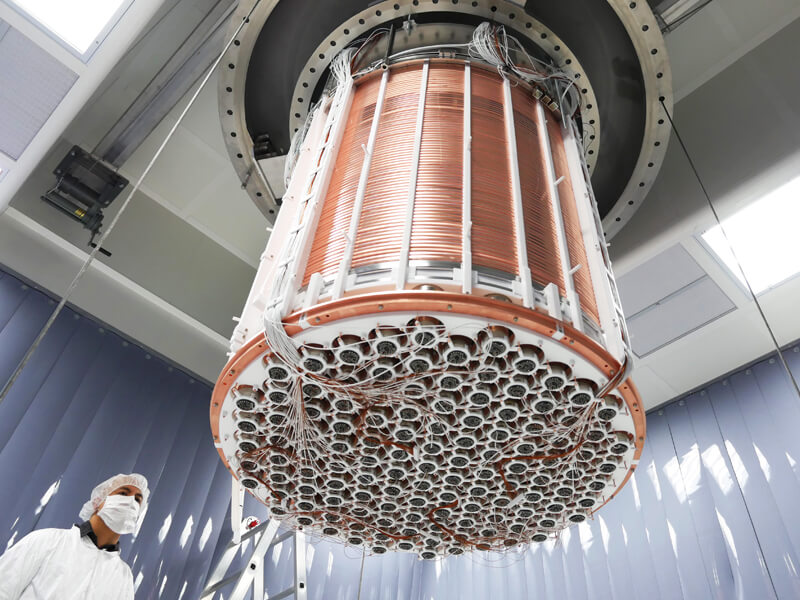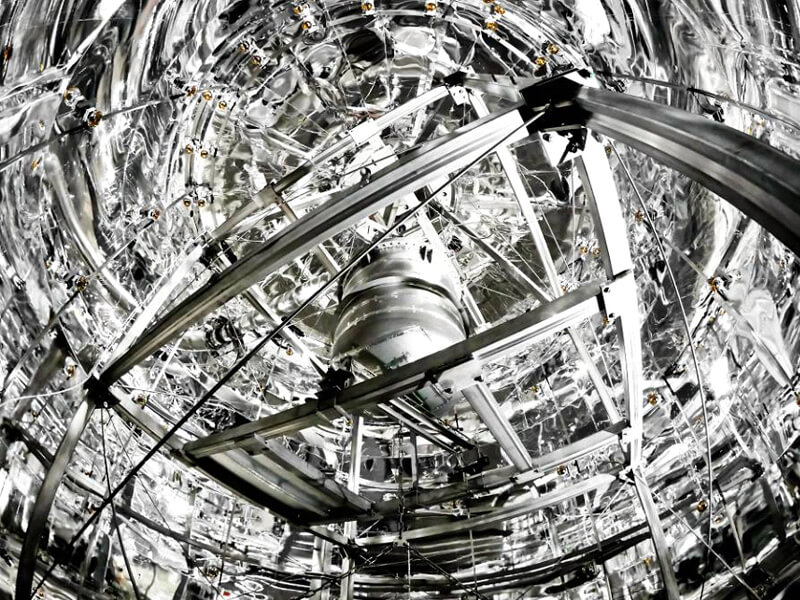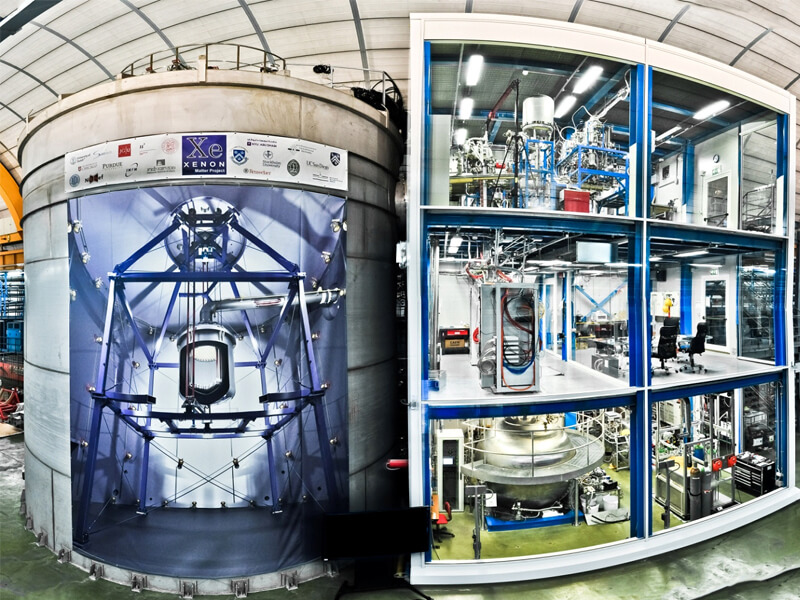
XENON - Dark Matter Direct Detection
The main goal of the XENON program is the detection of dark matter in the form of WIMPs (Weakly Interactive Massive Particles). The existing models predict interaction rates with standard matter that can be as low as 1 event/ton of target/year. This way large target masses are needed as well as extremely low radiation background levels.
Our team (xenon.fis.uc.pt) is part of this collaboration since 2005 when the first science prototype (XENON10, with circa 12 kg of Xe) was designed and installed underground below 1300m of rock in the Gran Sasso National Laboratory, in Italy. Its results have set new exclusion limits on the spin independent WIMP-nucleon interaction cross-section (e.g. Phys. Rev. Lett. 100 (2008) 21303).
In 2008 a new prototype, XENON100, was deployed. With more than 10 times the mass and a passive radiation shield that allowed to strongly reduce the background radiation levels when compared to its predecessor it consistently delivered the best exclusion limits (e.g. Phys. Rev. Lett. 107 (2011) 131302; Phys. Rev. Lett., 109 (2012) 181301; Phys. Rev. Lett., 111 (2013) 021301; Science 349 (2015) 851), attaining its science goal by 2012.
XENON1T, with 20 fold more mass and a 200 lower background radiation level than XENON100, started data acquisition in 2016 and reached its predicted exclusion limits (2 orders of magnitude lower than XENON100) after 2 years of operation, keeping XENON in the forefront of the dark matter search world race (e.g. Phys. Rev. Lett. 121 (2018) 111302; Nature 568 (2019) 532; Phys. Rev. Lett. 122 (2019) 141301).
In 2018, the program entered its final phase with the construction of XENONnT, completed in early 2020 with data taking expected to start by early Fall 2020. With over 8 tons of ultrapure Xe, XENONnT represents the state of the art in the field with the best prospects ever in history for the discovery of the elusive dark matter.
Real time news on both additional XENON1T results and XENONnT progress may be found at xenonexperiment.org or in social media (XENON dark matter).
Funding (2018-2021)
239 k€
Project responsible

José António Matias-Lopes
fcjam@gian.fis.uc.pt



